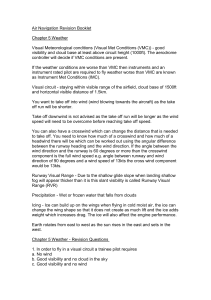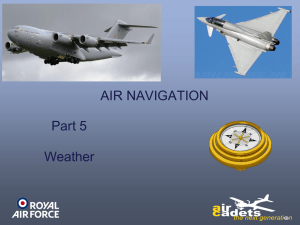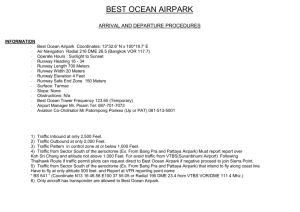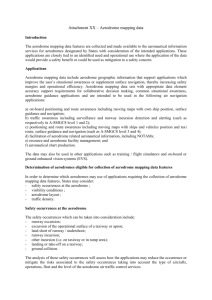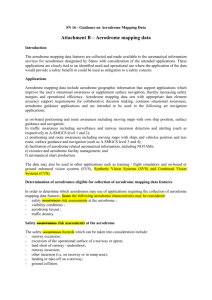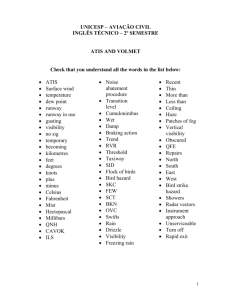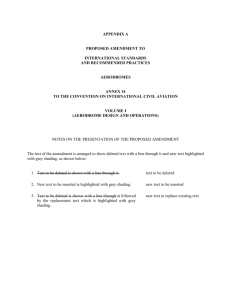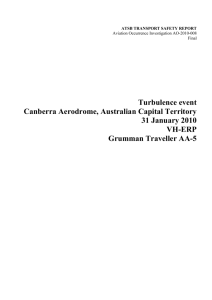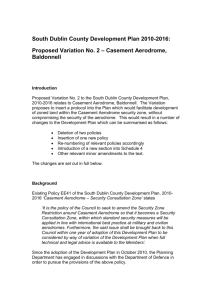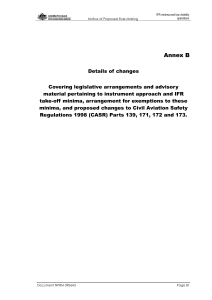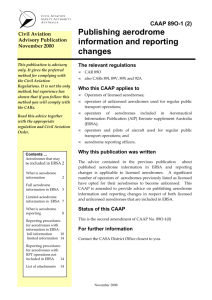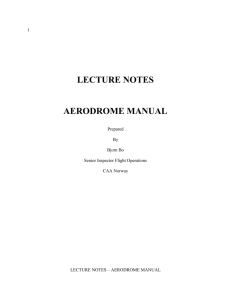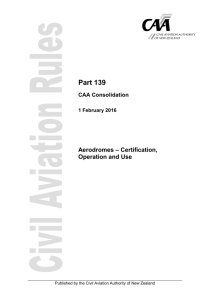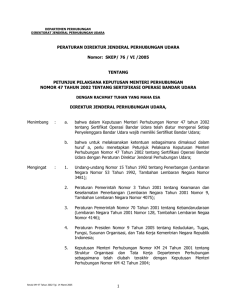Annex 1
advertisement
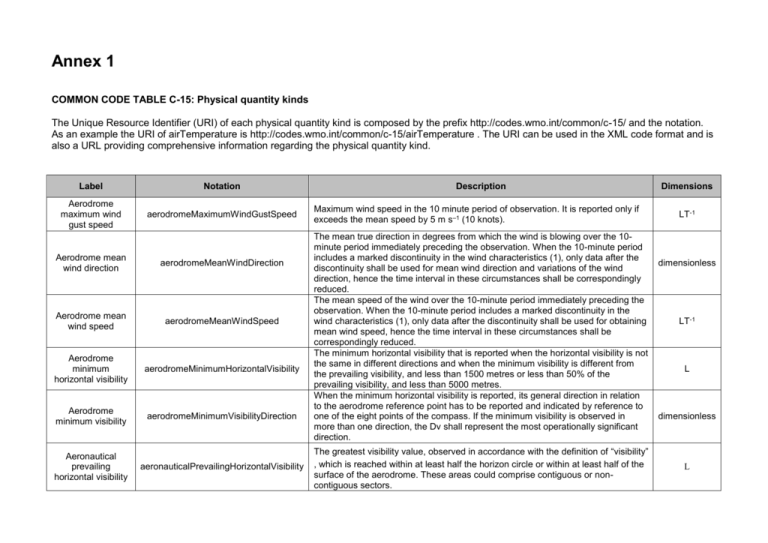
Annex 1 COMMON CODE TABLE C-15: Physical quantity kinds The Unique Resource Identifier (URI) of each physical quantity kind is composed by the prefix http://codes.wmo.int/common/c-15/ and the notation. As an example the URI of airTemperature is http://codes.wmo.int/common/c-15/airTemperature . The URI can be used in the XML code format and is also a URL providing comprehensive information regarding the physical quantity kind. Label Notation Aerodrome maximum wind gust speed aerodromeMaximumWindGustSpeed Aerodrome mean wind direction aerodromeMeanWindDirection Aerodrome mean wind speed aerodromeMeanWindSpeed Aerodrome minimum horizontal visibility aerodromeMinimumHorizontalVisibility Aerodrome minimum visibility aerodromeMinimumVisibilityDirection Aeronautical prevailing horizontal visibility aeronauticalPrevailingHorizontalVisibility Description Maximum wind speed in the 10 minute period of observation. It is reported only if exceeds the mean speed by 5 m s–1 (10 knots). The mean true direction in degrees from which the wind is blowing over the 10minute period immediately preceding the observation. When the 10-minute period includes a marked discontinuity in the wind characteristics (1), only data after the discontinuity shall be used for mean wind direction and variations of the wind direction, hence the time interval in these circumstances shall be correspondingly reduced. The mean speed of the wind over the 10-minute period immediately preceding the observation. When the 10-minute period includes a marked discontinuity in the wind characteristics (1), only data after the discontinuity shall be used for obtaining mean wind speed, hence the time interval in these circumstances shall be correspondingly reduced. The minimum horizontal visibility that is reported when the horizontal visibility is not the same in different directions and when the minimum visibility is different from the prevailing visibility, and less than 1500 metres or less than 50% of the prevailing visibility, and less than 5000 metres. When the minimum horizontal visibility is reported, its general direction in relation to the aerodrome reference point has to be reported and indicated by reference to one of the eight points of the compass. If the minimum visibility is observed in more than one direction, the Dv shall represent the most operationally significant direction. The greatest visibility value, observed in accordance with the definition of “visibility” , which is reached within at least half the horizon circle or within at least half of the surface of the aerodrome. These areas could comprise contiguous or noncontiguous sectors. Dimensions LT-1 dimensionless LT-1 L dimensionless L Label Notation Description Dimensions Aeronautical visibility aeronauticalVisibility The greater of:(a) The greatest distance at which a black object of suitable dimensions, situated near the ground, can be seen and recognized when observed against a bright background; (b) The greatest distance at which lights in the vicinity of 1000 candelas can be seen and identified against an unlit background. L Air temperature airTemperature The temperature indicated by a thermometer exposed to the air in a place sheltered from direct solar radiation. Θ Altimeter setting (QNH) altimeterSettingQnh Atmospheric pressure atmosphericPressure Depth of runway deposit depthOfRunwayDeposit Dew-point temperature dewPointTemperature Height of base of cloud heightOfBaseOfCloud Horizontal visibility horizontalVisibility Maximum wind gust speed maximumWindGustSpeed Altimeter setting (also known as QNH) is defined as barometric pressure adjusted to sea level. It is a pressure setting used by pilots, air traffic control (ATC), and low frequency weather beacons to refer to the barometric setting which, when set on an aircraft's altimeter, will cause the altimeter to read altitude above mean sea level within a certain defined region. The atmospheric pressure on a given surface is the force per unit area exerted by virtue of the weight of the atmosphere above. The pressure is thus equal to the weight of a vertical column of air above a horizontal projection of the surface, extending to the outer limit of the atmosphere. ML-1T-2 ML-1T-2 Depth of deposit on surface of runway L The temperature to which a given air parcel must be cooled at constant pressure and constant water vapour content in order for saturation to occur. Θ For a given cloud or cloud layer, vertical distance (measured from local ground surface) of the lowest level in the atmosphere at which the air contains a perceptible quantity of cloud particles. The greatest distance determined in the horizontal plane at the ground surface that prominent objects can be seen and identified by unaided, normal eyes. Nominal maximum speed of wind during a given period; usually determined as a mean wind speed over a short duration (e.g. 1-minute) within a longer period (e.g. 10-minutes). L L LT-1 Label Notation Description Dimensions Runway contamination coverage runwayContaminationCoverage Proportion of runway that is contaminated. A runway is considered to be contaminated when more than 25% of the runway surface area(whether in isolated areas or not) within the required length and width being used is covered by the following:(a) Surface water more than 3 mm deep, or by slush or loose snow equivalent to more than 3 mm of water; (b) Snow which has been compressed into a solid mass which resists further compression and will hold together or break into lumps if picked up (compacted snow); or (c) Ice, including wet ice. dimensionless Runway friction coefficient runwayFrictionCoefficient Quantitative assessment of friction coefficient of runway surface. dimensionless Runway visual range (RVR) runwayVisualRangeRvr The range over which the pilot of an aircraft on the centre line of a runway can see the runway surface markings or the lights delineating the runway or identifying its centre line. L Sea surface temperature seaSurfaceTemperature Temperature of the sea water at surface. Θ Vertical visibility verticalVisibility Maximum distance at which an observer can see and identify an object on the same vertical as himself, above or below. L NOTES: (1) A marked discontinuity occurs when there is an abrupt and sustained change in wind direction of 30° or more, with a wind speed of 5 ms–1 (10 KT) or more before or after the change, or a change in wind speed of 5 ms–1 (10 KT) or more, lasting at least two minutes.
